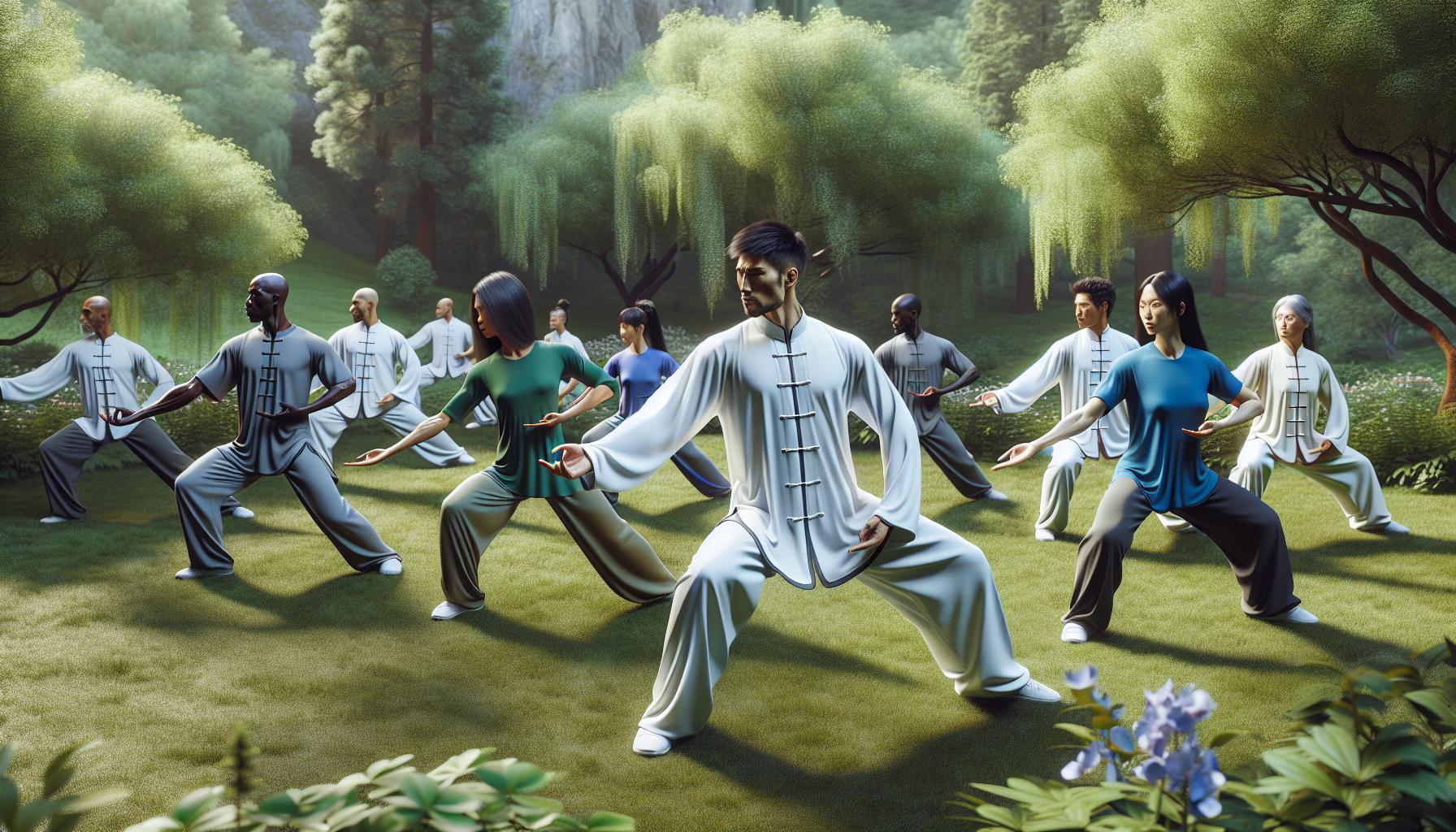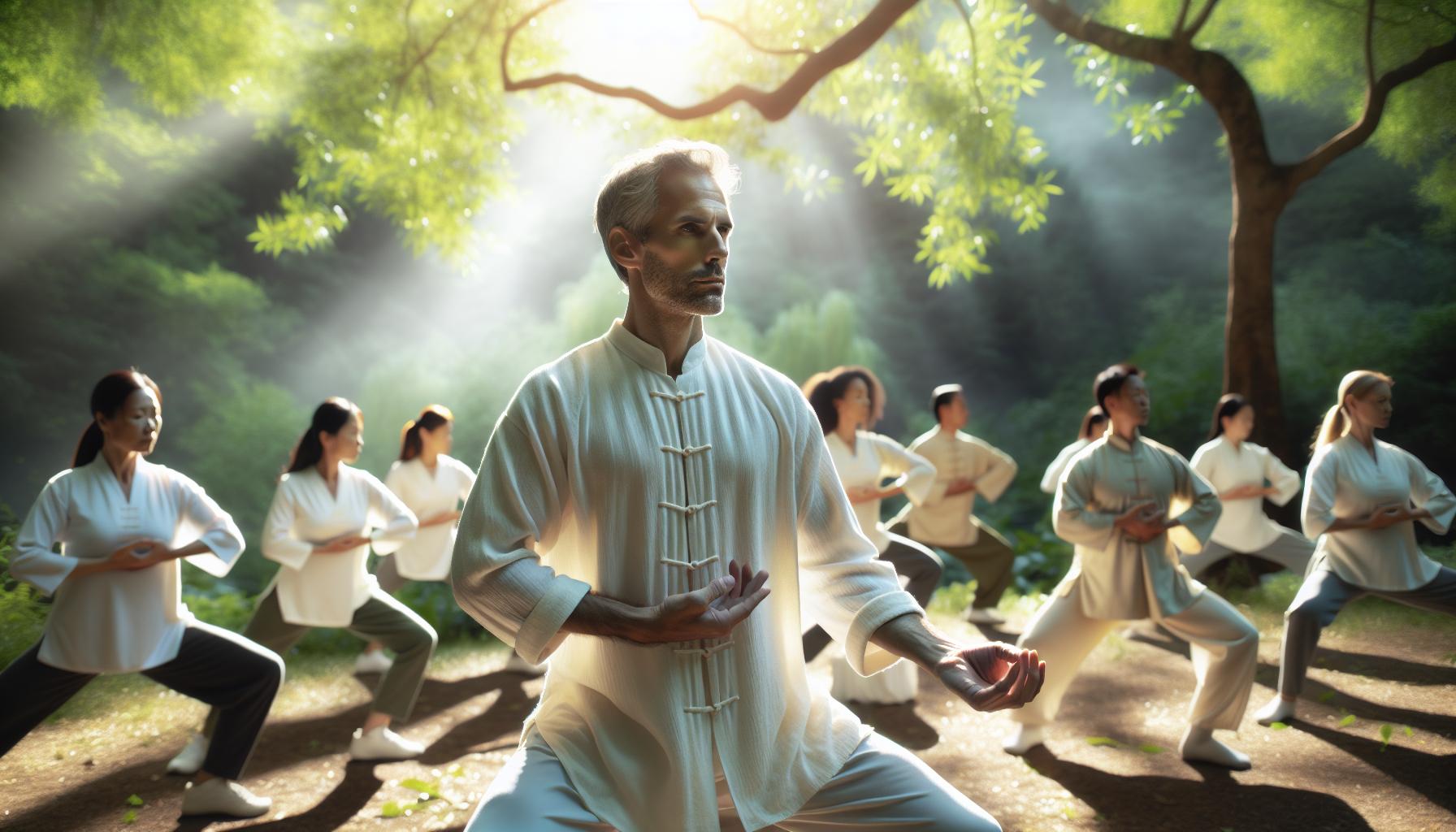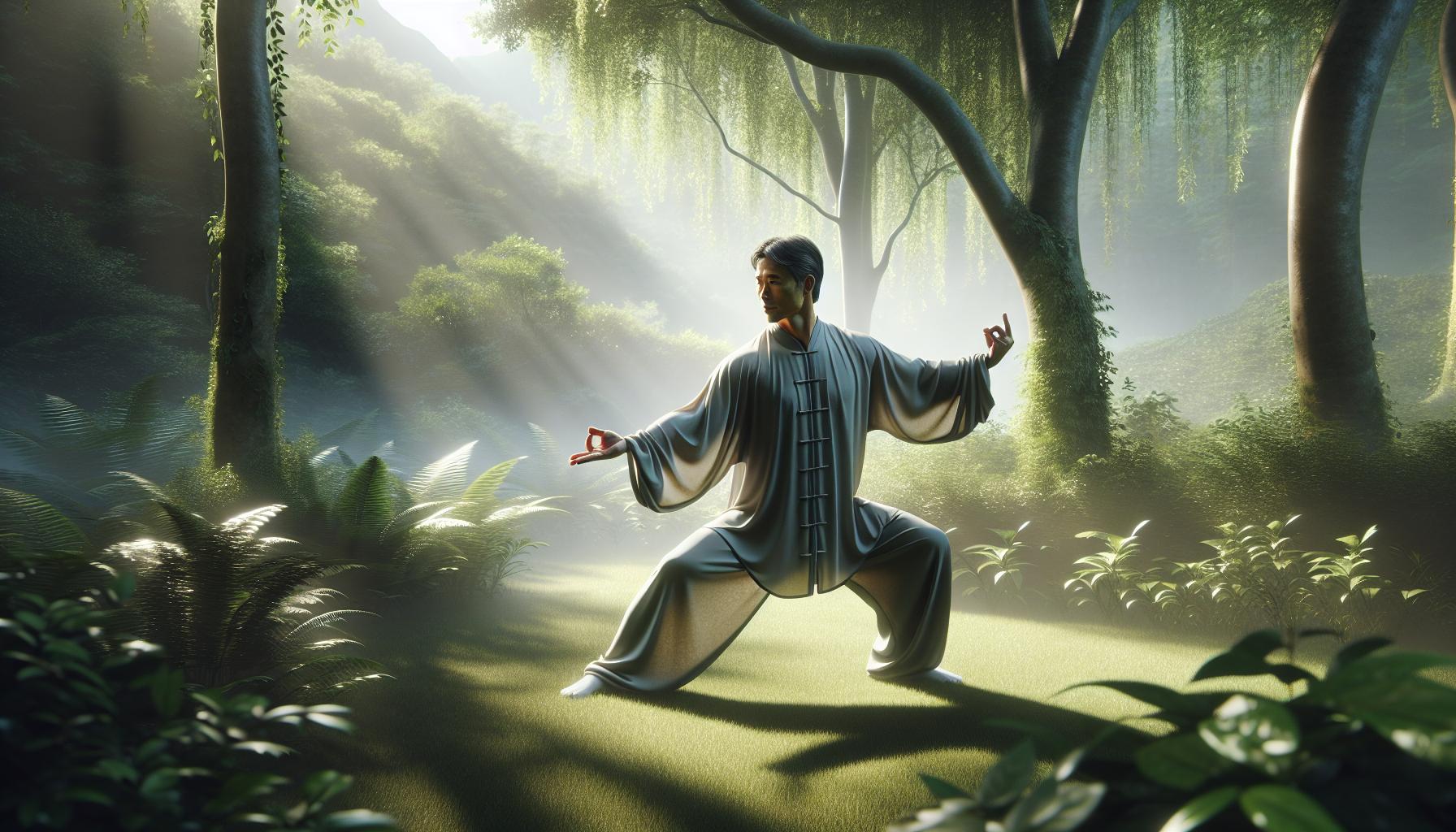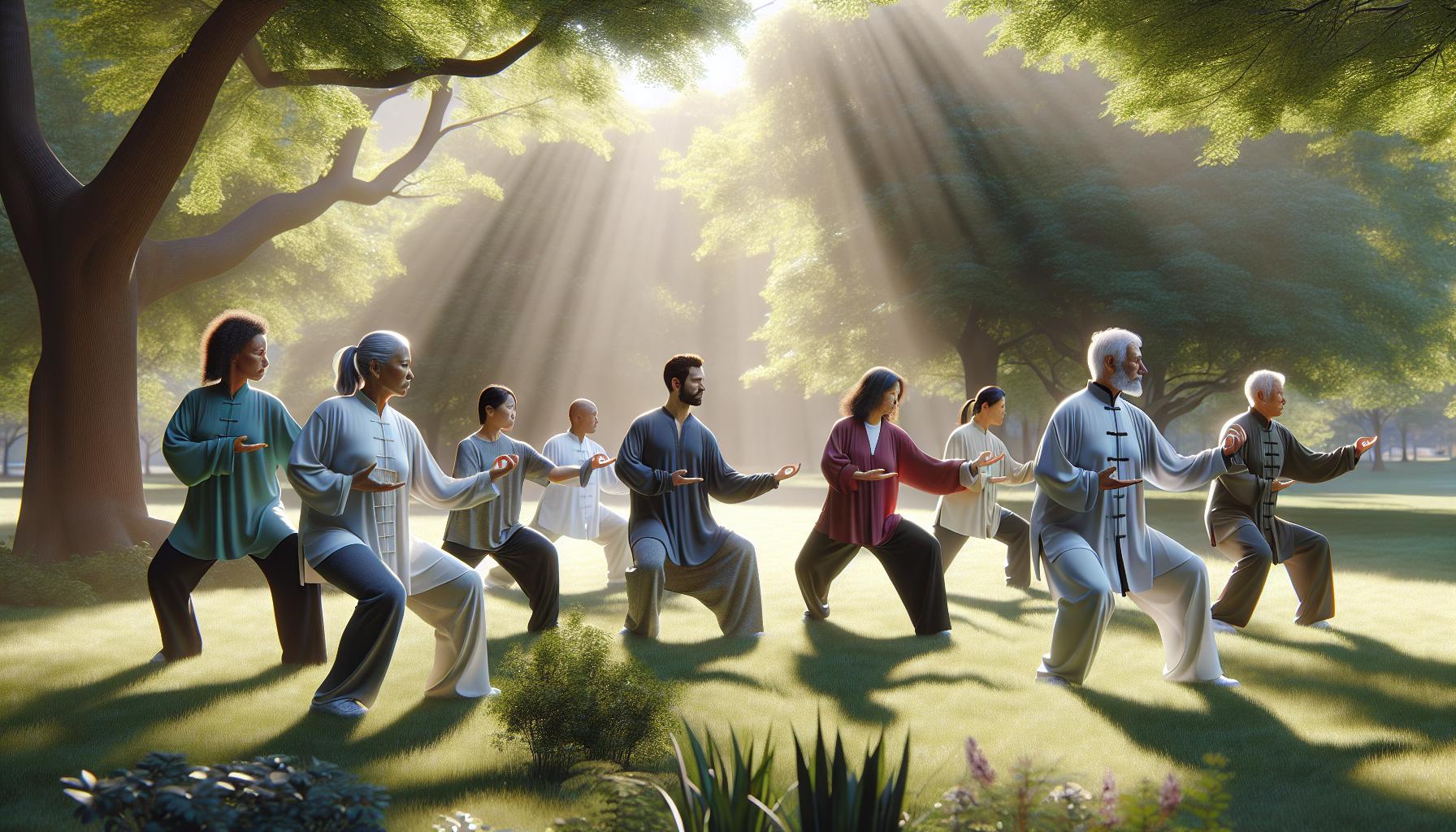When I first encountered chi martial arts, I was captivated by its blend of physical prowess and spiritual depth. Unlike traditional martial arts that focus solely on combat techniques, chi martial arts emphasizes harnessing and cultivating one’s internal energy, or “chi.” This unique approach not only enhances physical abilities but also promotes mental clarity and emotional balance.
As I delved deeper into the practice, I discovered its rich history and diverse styles, each offering a different pathway to mastery. From Tai Chi’s graceful movements to the dynamic techniques of Qigong, chi martial arts provides a holistic experience that resonates with both beginners and seasoned practitioners. Join me as I explore the transformative power of these ancient arts and uncover how they can enrich our lives today.
Key Takeaways
- Emphasis on Internal Energy: Chi martial arts focus on harnessing and cultivating “chi,” enhancing both physical abilities and emotional balance.
- Diverse Styles: Key styles such as Tai Chi, Qigong, and Bagua Zhang offer varied approaches to mastering internal energy, promoting relaxation and improved health.
- Holistic Benefits: Practicing chi martial arts leads to enhanced physical health, mental clarity, emotional stability, and overall well-being.
- Mind-Body Connection: Strengthening the awareness of thoughts and emotions enhances focus, resilience, and the overall effectiveness of martial practices.
- Rich Historical Roots: Chi martial arts have a deep history rooted in Chinese culture, evolving from ancient self-defense techniques to contemporary holistic practices.
- Community and Support: Engaging with chi martial arts fosters a sense of community, enhancing the learning experience and commitment to personal growth.
Overview of Chi Martial Arts
Chi martial arts emphasize the cultivation and utilization of internal energy, known as “chi” or “qi.” This concept centers around harnessing one’s energy for self-defense, healing, and self-improvement. Practitioners often experience enhanced physical abilities, improved mental focus, and increased emotional stability.
Many forms exist under the chi martial arts umbrella, including Tai Chi, Qigong, and Bagua Zhang. Each style incorporates specific movements and techniques that promote relaxation, balance, and fluidity.
- Tai Chi: Known for its slow, graceful movements, Tai Chi enhances flexibility, posture, and mental tranquility.
- Qigong: Focused on breath control and meditation, Qigong cultivates chi through rhythmic movements, improving overall health.
- Bagua Zhang: Characterized by circular walking patterns, Bagua Zhang develops agility and adaptability in a dynamic environment.
Chi martial arts aren’t limited to physical practices; they foster personal growth and holistic healing. Through consistent practice, individuals often develop a deeper connection between mind, body, and spirit. This integration leads to a greater sense of well-being and resilience in daily life, making chi martial arts relevant for everyone, regardless of experience level.
Historical Background

Chi martial arts carry a rich history that spans centuries, with deep roots in Chinese culture. Understanding their origins and evolution provides valuable insights into their significance today.
Origins of Chi Martial Arts
Chi martial arts trace their origins back to ancient China, with documentation appearing as early as the Han Dynasty (206 BC – 220 AD). These practices began as methods for self-defense, meditation, and health maintenance. Early practitioners emphasized the cultivation of “chi,” or vital energy, to enhance physical and mental well-being. Monastic communities played a crucial role in developing these techniques, integrating them with philosophical teachings of Taoism and Buddhism. Traditional texts, such as the “Dao De Jing,” outline the principles of harmony and balance that underpin these arts.
Evolution Over Time
Over time, chi martial arts underwent significant transformations, influenced by various dynasties and regional practices. The Tang Dynasty (618–907) saw the formalization of martial arts training, leading to the establishment of schools and styles. This period marked the development of Tai Chi and Qigong, blending physical movements with breath control and meditation techniques. During the Ming Dynasty (1368–1644), chi martial arts gained popularity among the general populace, further diversifying into styles like Bagua Zhang and Xing Yi Quan.
In the 20th century, global interest in these practices surged, resulting in the establishment of formal schools outside China. Modern practitioners often emphasize the holistic benefits of chi martial arts, focusing on health, stress relief, and personal development, making these ancient practices relevant in contemporary life.
Key Principles of Chi Martial Arts

Chi martial arts emphasize the cultivation of internal energy, which enhances both physical and mental capabilities. Understanding these core principles is crucial for anyone looking to deepen their practice.
Importance of Energy Flow
Maintaining energy flow is essential in chi martial arts. Practitioners focus on directing “chi” through specific pathways in the body, known as meridians. This energy flow boosts vitality and supports overall well-being. Techniques like deep breathing and fluid movements promote circulation and balance throughout the body. As energy moves freely, it reduces blockages, alleviates stress, and enhances training effectiveness. Consistent practice leads to improved performance in both martial techniques and everyday activities.
Mind-Body Connection
The mind-body connection forms the foundation of chi martial arts. Practitioners develop awareness of their thoughts, emotions, and physical sensations. This awareness fosters a heightened sense of presence, promoting mental clarity and emotional stability. Through meditation and focused practice, individuals cultivate a harmonious relationship between their physical actions and mental intentions. Strengthening this connection improves focus during practices and enhances resilience in daily challenges. Engaging in chi martial arts transforms not only physical skills but also emotional and psychological resilience.
Types of Chi Martial Arts

Chi martial arts encompass various styles, each emphasizing internal energy or “chi” for different purposes. Below are key styles that illustrate the breadth of chi martial arts.
Tai Chi
Tai Chi, characterized by its slow, flowing movements, focuses on promoting balance, flexibility, and mental tranquility. This practice involves a series of postures that practitioners transition through seamlessly, enhancing body awareness and coordination. I appreciate how Tai Chi serves both physical fitness and meditation, allowing for improvements in health and well-being while reducing stress.
Qigong
Qigong emphasizes breath control, meditation, and rhythmic movements to enhance overall health. This practice often incorporates visualizations and specific postures that promote energy flow throughout the body. I find that Qigong not only elevates physical vitality but also fosters mental clarity, making it ideal for individuals seeking holistic wellness.
Traditional Martial Arts Influences
Chi martial arts draw significant influence from traditional martial arts, including Kung Fu and other fighting styles. Many chi practices incorporate techniques that enhance self-defense capabilities while emphasizing energy efficiency. I recognize these influences, as they provide a foundation for understanding the movement and application of chi in various situations, balancing combat effectiveness with personal growth.
Benefits of Practicing Chi Martial Arts
Practicing chi martial arts offers numerous physical, mental, and emotional benefits.
- Improved Physical Health
Practitioners experience enhanced flexibility, strength, and coordination, which contribute to overall fitness. Regular practice of styles like Tai Chi and Qigong strengthens muscles while promoting joint health. - Enhanced Mental Focus
Focusing on breathing techniques and fluid movements cultivates mindfulness. As I engage in these practices, my concentration improves, leading to better decision-making and increased productivity in daily tasks. - Emotional Balance
Chi martial arts nurture emotional stability by reducing stress and anxiety. Practicing regularly allows me to cultivate patience and resilience, leading to a more balanced emotional state. - Boosted Energy Levels
Harnessing “chi” enhances vitality, resulting in higher energy levels throughout the day. I feel revitalized and proactive, making it easier to tackle daily challenges. - Holistic Healing
These practices facilitate healing by promoting relaxation and reducing tension. Through breath control and gentle movements, I experience improved circulation and decreased muscle stiffness. - Strengthened Mind-Body Connection
Developing awareness of my body and emotions deepens my understanding of self. This connection helps me respond more effectively to physical and emotional stressors. - Self-Defense Skills
Chi martial arts incorporate effective self-defense techniques. This training instills confidence in situations that require personal safety while emphasizing energy efficiency in movements. - Community and Connection
Joining a dojo or practicing with others fosters a sense of community. I benefit from shared experiences and support, enhancing my commitment to the practice.
By integrating chi martial arts into my routine, I cultivate a holistic practice that promotes physical health, mental clarity, and emotional resilience, enriching my overall quality of life.
Conclusion
Chi martial arts offer a transformative journey that goes beyond mere physical training. I’ve experienced firsthand how these practices cultivate a deeper connection between mind, body, and spirit. The holistic benefits of Tai Chi, Qigong, and other styles have enriched my life in ways I never anticipated.
Embracing the principles of energy flow and mindfulness has not only improved my physical abilities but also enhanced my emotional resilience. Whether you’re a beginner or an experienced practitioner, there’s something in chi martial arts for everyone. I’m excited to see how these ancient practices continue to evolve and inspire others on their paths to wellness and self-discovery.




